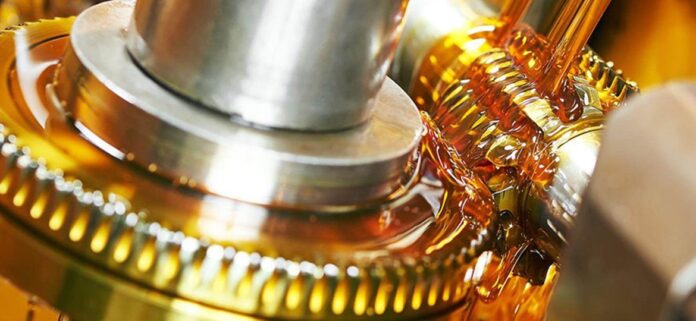In the world of machinery, especially when it comes to aircraft and vehicles, the role of hydraulic systems is paramount. These systems rely on hydraulic fluid to transfer power and enable smooth operation. However, not all hydraulic fluids are created equal. There are significant differences between those used in aircraft and those used in vehicles. Understanding these disparities is crucial for maintaining optimal performance and safety. So, let’s dive into the intricacies of aircraft hydraulic fluid versus vehicle hydraulic fluid.
What is Hydraulic Fluid?
Before delving into the dissimilarities, let’s grasp the fundamental concept of hydraulic fluid. Hydraulic fluid, such as 5606 hydraulic fluid, serves as the lifeblood of hydraulic systems, transmitting power and lubricating components to ensure seamless functionality. It operates under high pressure, exerting force to move pistons, actuators, and other mechanical parts.
Common Characteristics of Hydraulic Fluid:
- Viscosity: Determines the fluid’s resistance to flow.
- Lubrication: Prevents wear and tear on system components.
- Corrosion Resistance: Shields metal parts from degradation.
- Thermal Stability: Maintains consistent performance across varying temperatures.
- Non-Compressibility: Transmits force efficiently without significant volume changes.
Now that we have a basic understanding, let’s dissect the disparities between aircraft and vehicle hydraulic fluids.
Chemical Composition
The primary disparity lies in the chemical composition of hydraulic fluids tailored for aircraft and vehicles. Aircraft hydraulic fluid, commonly known as Skydrol, typically comprises phosphate esters. These fluids possess excellent fire resistance and can withstand high temperatures prevalent in aircraft environments. Conversely, vehicle hydraulic fluids, such as those used in cars or heavy machinery, often consist of mineral oil or synthetic compounds. These fluids prioritize compatibility with diverse materials found in vehicle systems.
Performance Requirements
Aircraft Hydraulic Fluid:
- Fire Resistance: Critical to ensure safety in the event of engine fires or hydraulic system malfunctions.
- Compatibility with Seals: Must not degrade elastomeric seals commonly used in aircraft systems.
- Low Volatility: Prevents vapor lock and ensures stable performance at high altitudes.
- Oxidation Stability: Maintains fluid integrity over extended periods, crucial for long-haul flights.
Vehicle Hydraulic Fluid:
- Thermal Stability: Withstands the heat generated by vehicle operations, including braking and steering.
- Compatibility with Materials: Must not corrode or degrade various metals and seals present in vehicle systems.
- Anti-Wear Properties: Reduces friction and extends the lifespan of hydraulic components subjected to heavy loads and constant movement.
- Cost-Effectiveness: Balancing performance with affordability is key, considering the frequent maintenance schedules of vehicles.
Operational Environment
The operational environment significantly influences the selection and performance of hydraulic fluids.
Aircraft Hydraulic Fluid:
- Altitude Extremes: Must maintain viscosity and performance under extreme temperature and pressure variations experienced at high altitudes.
- Fire Risk: Fire-resistant properties are crucial due to the presence of highly flammable aviation fuel and the potential for catastrophic consequences in case of fire.
- Longevity: Aircraft hydraulic systems often operate for extended durations during long-haul flights, necessitating fluids with exceptional durability.
Vehicle Hydraulic Fluid:
- Road Conditions: Exposed to varying terrains, temperatures, and operating conditions, requiring robust fluids capable of consistent performance.
- Environmental Impact: Hydraulic fluids in vehicles must adhere to environmental regulations and minimize ecological footprint.
- Maintenance Intervals: Vehicle hydraulic systems typically undergo more frequent maintenance compared to aircraft, necessitating fluids that can withstand wear and degradation over shorter intervals.
Maintenance and Servicing
Ensuring the longevity and reliability of hydraulic systems involves meticulous maintenance and servicing practices.
Aircraft Hydraulic Systems:
- Rigorous Inspections: Regular checks for leaks, contamination, and fluid degradation are paramount due to the critical nature of aircraft operations.
- Fluid Analysis: Periodic testing to assess fluid quality and identify potential issues before they escalate into operational hazards.
- Scheduled Replacements: Strict adherence to manufacturer-recommended fluid change intervals to maintain system integrity and safety.
Vehicle Hydraulic Systems:
- Routine Checks: Regular inspections for leaks, fluid levels, and system performance to preempt potential failures.
- Fluid Flushes: Periodic replacement of hydraulic fluid to prevent contamination and ensure optimal performance.
- DIY vs. Professional Servicing: While some vehicle owners may opt for DIY maintenance, certain tasks, such as fluid flushes and system repairs, are best left to certified technicians.
Conclusion
In essence, while both aircraft and vehicle hydraulic fluids serve the common purpose of transmitting power and facilitating motion, their distinct compositions, performance requirements, and operational environments necessitate tailored formulations. Aircraft hydraulic fluids prioritize fire resistance, compatibility with aerospace materials, and longevity under extreme conditions, whereas vehicle hydraulic fluids emphasize thermal stability, material compatibility, and cost-effectiveness. Understanding these disparities is imperative for ensuring the safety, reliability, and efficiency of hydraulic systems in diverse applications. So, whether you’re soaring through the skies or navigating the open road, the right hydraulic fluid keeps your machinery running smoothly, one pressurized drop at a time.
